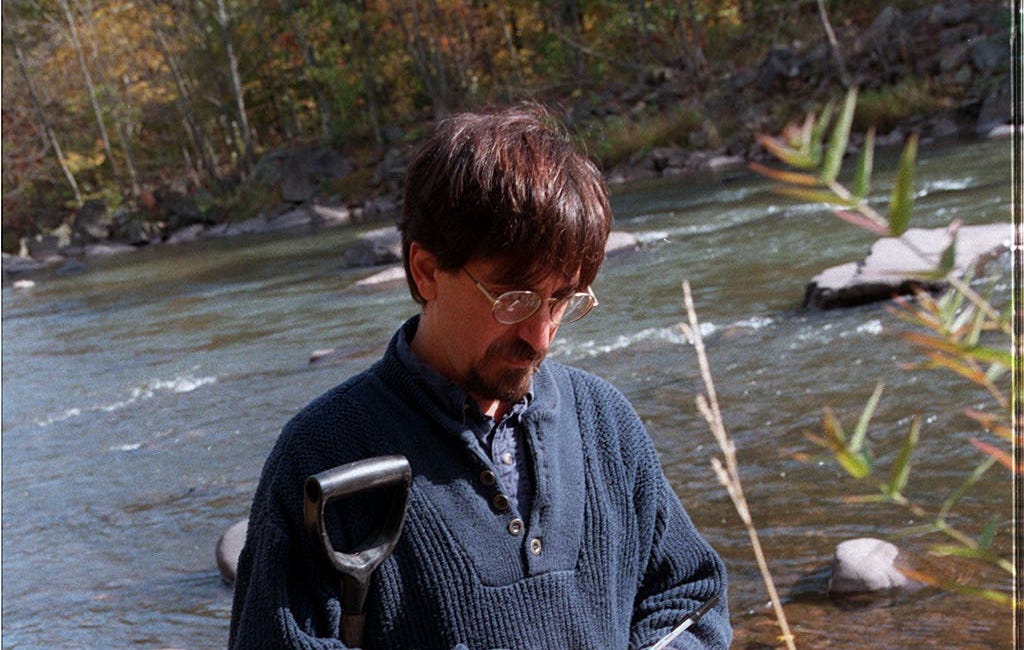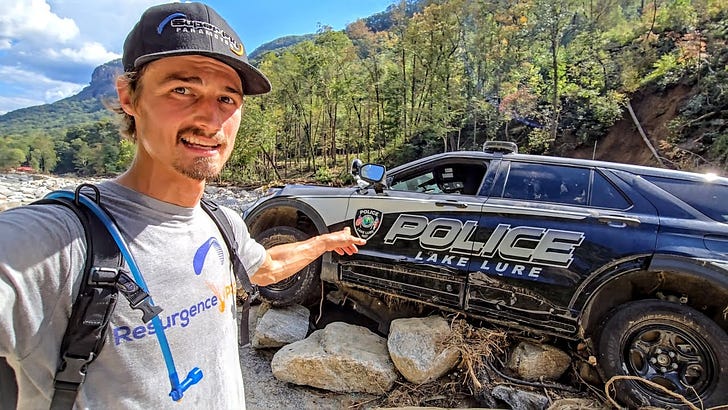Amid Autocrats' Attacks, Imploding Revenue and a Flood of Distraction and Fakery, What is Journalism For?
A rich and vital discussion of issues and options as journalism faces epic threats.
Watch: What is Journalism For? Explore with Media Tracker Jon Allsop and local journalism innovator Karen Bordeleau (streamed April 16, 2025).
You can forget about sustaining the physical and biological environment or “civil’ society if the media environment continues to overflow with distraction, deception and attacks on journalism.
Worse yet, the ratio of journalists to p.r. narrative spinners in the United States is now 1 to 7, according to New York Times reporter Mike Baker, via this recent tweet.
If you want to appreciate the implications of this imbalance, read this super-sobering 2024 LinkedIn post by Bob Brody, a public relations consultant and former senior vice president of the giant PR house Rubenstein, Ogilvy and Weber Shandwick. Just a year earlier the ratio was one reporter to every SIX public relations professionals…
Here’s a key section:
Should these opposing trajectories matter to the average American citizen who still avidly follows the news? Yes. It should matter a lot. It will have multiple implications, some anticipated but others unforeseen.
The outcome that’s likely least expected and most overlooked is this: the public relations profession will grow vastly more powerful and persuasive, inevitably so, and exert more influence, more widely and deeply, than ever before, over which news is reported and how.
The news media cutbacks will thereby streamline a chain reaction already long since set in motion. Public relations will be better positioned to bargain for media coverage that reflects a party line favorable to clients. Reporters will collide with fresh challenges to maintain a semblance of objectivity and arrive at some approximation of the truth….
And that’s just for starters. Given more layoffs, fake news and misinformation will more easily find new homes. Propaganda of a sort will prevail. The PR business will serve more than ever as a shadow media, acting as a puppeteer, a Wizard of Oz masterminding public perception secretly behind a curtain to win hearts and minds. [Read the rest.]
A bad time for a journalism implosion
Given all of this, especially in the context of Trump’s attacks on 60 Minutes and the Associated Press, not to mention his adding out-and-out propagandists to the White House reporters pool, it’s worth stepping back to assess some basic questions.
That’s why I ran a Sustain What webcast with Jon Allsop, the editor and main writer of the Columbia Journalism Review’s newsletter The Media Today and now author of an incisive new book about a critical question: What is Journalism For?.
INSERT 4/16, 10:45 a.m. ET - We were also joined by Karen Bordeleau, the executive editor of a great example of community-driven local journalism - the New Bedford Light. The newsroom serves a 40-percent immigrant community on the Massachusetts coast and broke an awful story this week about a violent ICE tactics used to capture a young Guatemalan immigrant with no Massachusetts criminal record. The video says it all:
The arrested Guatemalan man was released on bond a month later.
- End insert
You can watch and share on Facebook, LinkedIn or X/Twitter.
Here’s a summary of the book from Bristol University Press:
Journalism faces multiple threats today all over the world: economic decline, online disinformation, the rise of AI, authoritarian curbs on freedom of the press, and violence against journalists. In such a climate, it’s more urgent than ever to ask what journalism is for.
Drawing on his experience as a journalist and media commentator, and on interviews with journalists from the US to Myanmar, Jon Allsop examines key concepts that constitute journalism’s role: good judgement, concern for truth and critical scrutiny of one or more communities.
Along the way, he also considers the relationship between journalism and activism; whether journalists should aspire to change the world and whether they can be seen as champions of democracy.
What is journalism for - my view
When I am asked what journalism is, I say it is the pracice of finding reliable data and navigating multiple perspectives around consequential issues to reveal reality - including the murky parts - and then convey that to the public.
My path - away from telling stories and toward hosting conversations - has been very different than that of most of my peers and friends, and that’s fine. In contrast to, say, the late 20th century’s “that’s the way it is” Walter Cronkite norm, there’s no single path or style or product now.
During the pandemic, The Atlantic won a 2021 Pulitzer Prize for Ed Yong’s compelling long-form narrative journalism when I felt its Covid Tracking Project - providing a go-to space for anyone seeking data on infections etc. - deserved at least equal billing. Click back to this 2020 Sustain What conversation with a batch of pandemic journalists and listen to
describe how the project came together and its impact.Back in 2013, when I was one of dozens of journalists queried on the “What is Journalism for?” question by the Columbia Journalism Review, I offered a different answer than the one above. You can sift all the answers here. Here’s what I wrote, which in retrospect didn’t answer the question but instead answered “What is an effective journalist?”:
On a complicated, fast-forward planet enveloped in information, journalists who thrive will be those who offer news consumers the same sense of trust that a skilled mountain guide provides to climbers after an avalanche. A sure trail cannot be guaranteed, but an honest effort can. Cronkite’s “That’s the way it is” no longer applies. Authority will derive less from an established media brand than through the constant scrutiny of the crowd. Effectiveness and impact may still come sometimes through a competitive scoop, but more often through collaborative networks in which insights flow in many directions.
If you missed my long-ago lecture and essay on my journalism journey, read on:
Can There Be Passion and Detachment in Environmental Journalism?
I want to give newcomers to my journey a bit of context on why I got into journalism nearly 40 years ago and how I pursue this practice. I first posted a version of this lecture summary in 2010 on my Dot Earth blog at The New York Times but want it to be outside the paywall here as well. Weigh in with your reactions.
In closing, I think it’s important to note that anyone can be journalistic, as the paragliding Youtuber Mark Huneycutt demonstrated in the aftermath of Hurricane Helene and the disinformation storm that followed the actual one:
Amid Toxic Online Fakery Around the Helene Flood Catastrophe, a Homegrown Videographer Chronicles Reality
As you’ve likely seen, the White House, FEMA, Snopes, local sheriffs and elected officials (including some Republicans) have been trying to fight a flood tide of distracting and dangerous online fakery that exploded in the aftermath of devastating deluges triggered by fading Hurricane Helene in the Appalachians.









Robert Bryce just canceled his subscription to the New York times. Among his reasons was their refusal to cover anything negative about Michael Mann in the Mann v Steyn libel suit. The only thing they reported was Mann's victory and million dollar punitive award with only one dollar in damages. Nothing about how this was reduced to 5 k and how Mann has to pay National Reviews 500 K expenses or how his lawyers are being sanctioned for misrepresenting his grants. The case still sets a bad precedent. The ACLU and lots of news organizations wrote amicus briefs for Steyn.